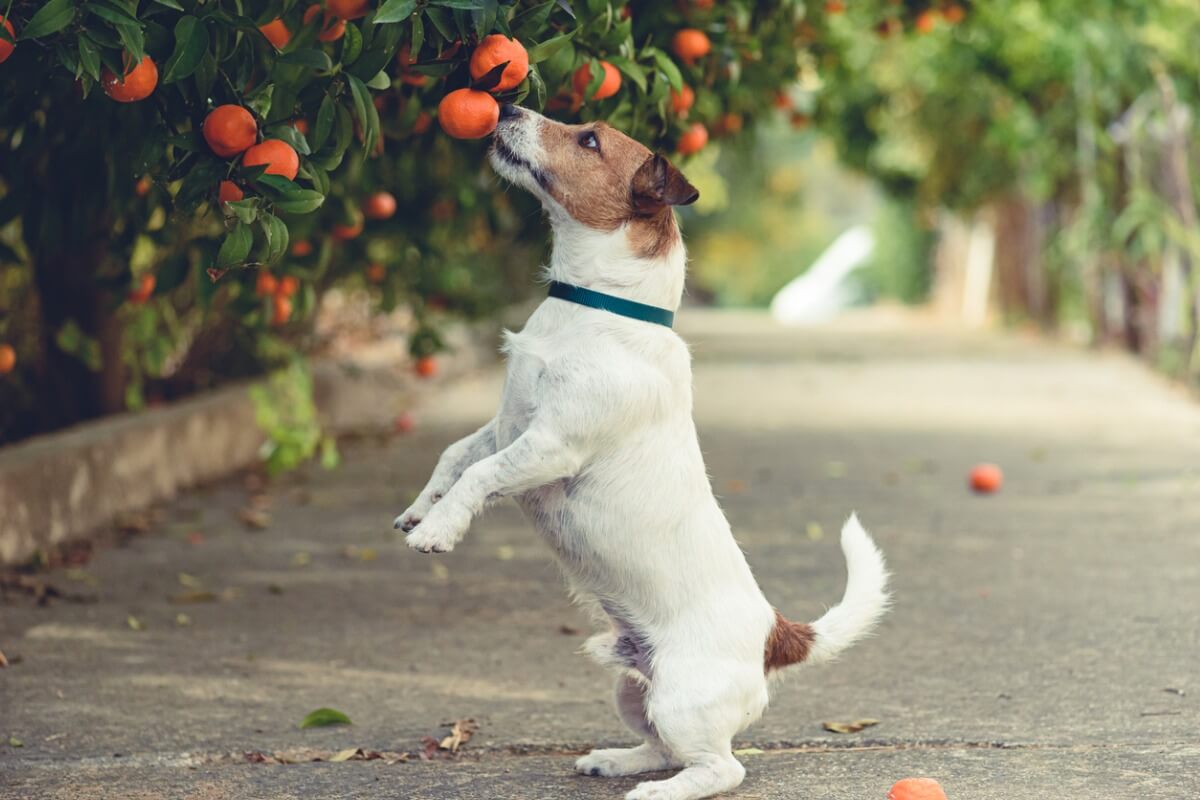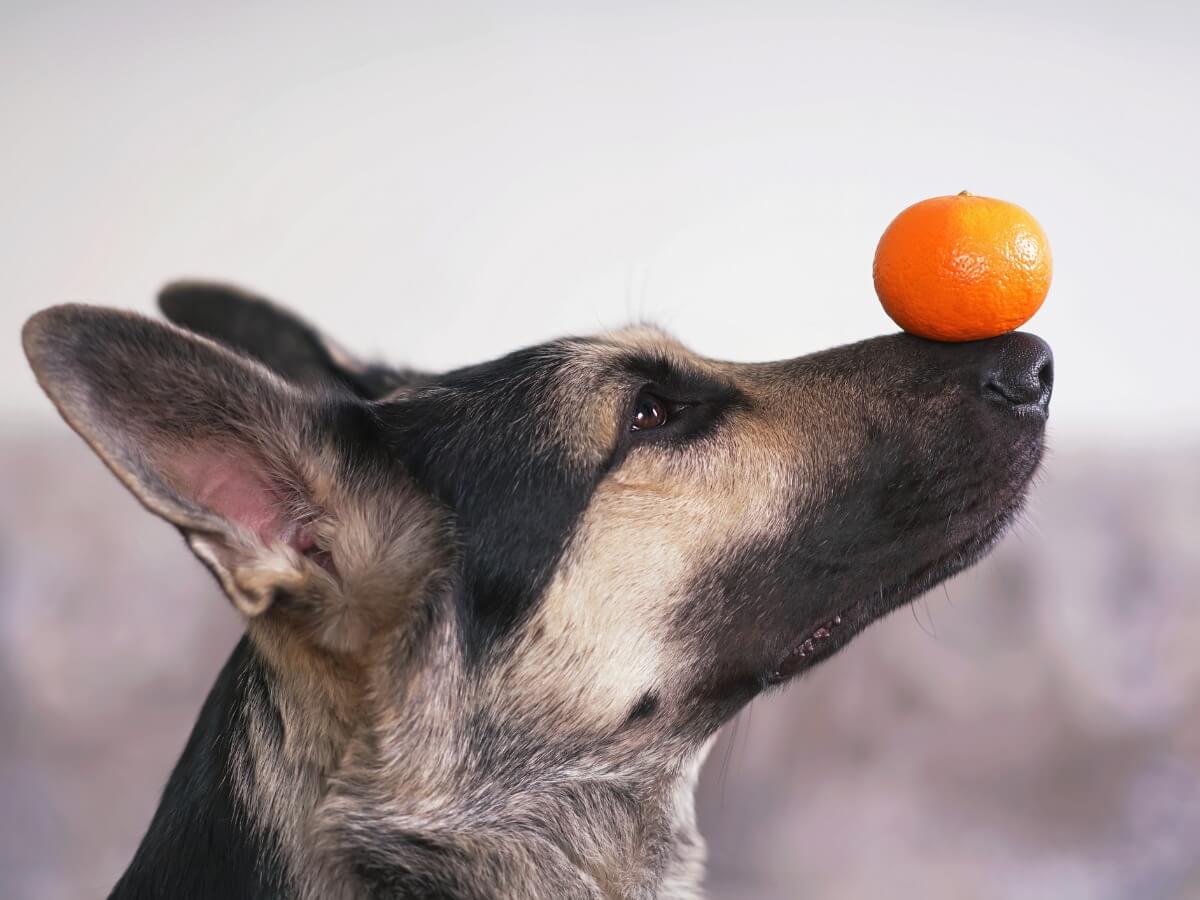Can Dogs Eat Oranges and Tangerines?
Dogs are omnivorous animals and, as such, can sporadically feed on fruits. Some will also eat oranges and mandarins.

It’s possible that your dog’s diet is based almost entirely on croquettes or some type of processed food made from meats and flours, and that citrus fruits aren’t included. The range of foods that you can give to a dog can be very wide, but can dogs eat oranges and tangerines without repercussions?
To answer the question, we invite you to continue reading. Next, we’ll explain the reasons why it’s advisable —or not— to offer these fruits to your pet.
Can dogs eat oranges and tangerines?
Believe it or not, dogs can eat oranges. Because it’s a sweet, juicy fruit, many dogs find this fruit pleasant for their palate and aren’t bothered by its characteristic citrus flavor.
Veterinary doctors assure that the consumption of oranges is safe for dogs and, in addition, these are an excellent source of nutrients such as potassium, fiber and vitamin C. They are fruits that don’t provide high levels of sodium, which makes them even more special.
All these vitamins and micronutrients have a common purpose: to keep your pet’s immune system in good condition. For example, vitamin C promotes an improvement in the functions of the immune system and for the production of collagen.
Although most dogs don’t need an extra supply of vitamin C, in situations of intense exercise and long periods of stress the ability of the liver to produce this vitamin may decrease. Therefore, offering a little orange in these cases is a very good option.

Dogs can eat oranges and tangerines, but are they dangerous?
As with oranges, tangerines aren’t harmful to dogs either. In reality, the flavors of both fruits don’t differ much from each other, as they’re very similar. If your pet has an interest in oranges, it’s most likely that they will also have an interest in mandarins.
The benefits of consuming oranges are also shared by mandarins. In addition, both fruits have a high water content, which favors the hydration of your pet, especially in the hottest months of the year. The percentage of fiber they have also helps the correct intestinal transit and to form stools of good consistency.
Now, if you’re lucky enough to find your dog likes the taste of these citrus fruits, take note of the recommendations that we’ll give you below. It’s important to keep reading so that you learn how to properly provide these fruits to your pet.
How to offer oranges and tangerines to dogs
Do you remember how powerful a dog’s sense of smell is? They have the ability to enhance this sense and perceive all the aromas in a much more intense way. So, when offering them an orange or mandarin as such, it’s most likely that they’ll reject them due to the strong smell they both transmit.
To avoid this situation, it’s best to remove the peel from these fruits. Then, we suggest you do the following:
- Remove the seeds: although they don’t contain any specific substance that can harm dogs, some segments have many of them and when ingested it could cause them discomfort.
- Avoid buying highly acidic oranges and mandarins: to do this, before offering the fruit to the dog, you can verify this by tasting a segment and making sure that it is indeed sweet. A bad experience could cause your pet to reject these fruits on future occasions.
- Better in wedges than juice: Orange and tangerine juice alone could lead to deterioration of tooth enamel when consumed in large quantities. Also, your pet can be exposed to high concentrations of citric acid, something that could cause stomach pain and burning when defecating.
What amounts are safe for dogs?
Any change in your pet’s usual diet could lead to digestive problems, mainly diarrhea. The best thing you can do is gradually incorporate new foods, so that its body gradually recognizes and assimilates them.
In the case of the segments of oranges and mandarins that you offer to your dog, these shouldn’t exceed more than 15% of its total daily ration. One or two orange segments per day is an adequate amount, as an excess could cause softer stools.
Since the recommended amount of intake isn’t large, you can use the orange segments as a reward and take them with you during the walk. You can also use the mandarin orange segments as positive reinforcement during training.
Remember that both mandarins and oranges have, among many other things, natural sugars, which can cause alterations in a dog’s blood readings. Therefore, it’s better to avoid these foods in diabetic dogs. Dogs with diabetes problems shouldn’t overeat oranges, tangerines, and other sweet foods.

In addition to oranges and mandarins, there are other fruits that you can include in their diet and your dog will surely love them. In any case, always consult your veterinarian before using them to avoid problems and poisoning from their consumption. Remember: a good diet is key to maintaining a balance between the health and well-being of your pet.

